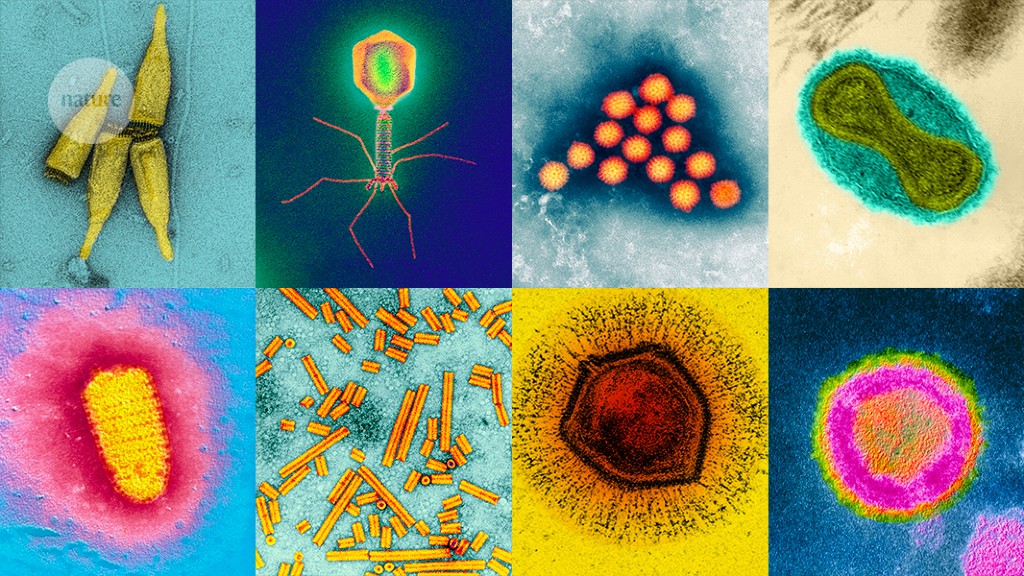
It now displays properties typified by living organisms, such as reacting to its environment and directing its efforts toward self- replication. When the virion comes into contact with the appropriate host, it becomes active and is then referred to as a virus. Virions can remain in this dormant state for extended periods of time, waiting patiently to come into contact with the appropriate host. In this simple, clearly non- living state viruses are referred to as 'virions'. During this time there are no internal biological activities occurring within the virus, and in essence the virus is no more than a static organic particle. When not in contact with a host cell, the virus remains entirely dormant. Once it was established that viruses consist merely of DNA or RNA surrounded by a protein shell, it became the scientific view that they are more complex biochemical mechanisms than living organisms. In order for a virus to replicate it must infect a suitable host cell. Viruses lack most of the internal structure and machinery which characterize 'life', including the biosynthetic machinery that is necessary for reproduction. In general, viruses are entirely composed of a single strand of genetic information encased within a protein capsule. Viruses contain some of the structures and exhibit some of the activities that are common to organic life, but they are missing many of the others. They lie somewhere between supra molecular complexes and very simple biological entities. Sick children can also cause parents to lose time from work.Ĭreated by George Rice, Montana State University. Vaccine- preventable diseases have a costly impact, resulting in doctor's visits, hospitalizations, and premature deaths. Immunizing individual children also helps to protect the health of our community, especially those people who cannot be immunized (children who are too young to be vaccinated, or those who can’t receive certain vaccines for medical reasons), and the small proportion of people who don’t respond to a particular vaccine. Those same germs exist today, but because babies are protected by vaccines, we don’t see these diseases nearly as often. Before vaccines, many children died from diseases that vaccines now prevent, such as whooping cough, measles, and polio.

If an unvaccinated child is exposed to a disease germ, the child's body may not be strong enough to fight the disease. However, this immunity goes away during the first year of life. Known computer viruses grew by 28,327 in 2004 to bring the number of old and new viruses to 112,438, according to IBM. Computer Viruses An Introduction Jeffrey Horton SITACS, University of Wollongong, Jennifer Seberry. But they're incredibly efficient for today's. Virology: What selection pressures exist on a virus that has infected. Newborn babies are immune to many diseases because they have antibodies they got from their mothers.īut a spectrum may exist between what is certainly. Through vaccination, children can develop immunity without suffering from the actual diseases that vaccines prevent. The child gets protection without having to get sick. In other words, a vaccine is a safer substitute for a child’s first exposure to a disease.

However, they are strong enough to make the immune system produce antibodies that lead to immunity.

For example, measles vaccine contains measles virus.īut the antigens in vaccines are either killed, or weakened to the point that they don’t cause disease. In fact there is: Vaccines contain the same antigens (or parts of antigens) that cause diseases. It would be nice if there were a way to give children immunity to a disease without their having to get sick first. If it ever enters the body again, even after many years, the immune system can produce antibodies fast enough to keep it from causing disease a second time. However, the immune system “remembers” that antigen. The immune system recognizes germs that enter the body as. Children are born with an immune system composed of cells, glands, organs, and fluids located throughout the body. Immunity is the body’s way of preventing disease. Over the years vaccines have prevented countless cases of disease and saved millions of lives. Thanks to a vaccine, one of the most terrible diseases in history – smallpox – no longer exists outside the laboratory. Diseases that used to be common in this country and around the world, including polio, measles, diphtheria, pertussis (whooping cough), rubella (German measles), mumps, tetanus, rotavirus and Haemophilus influenzae type b (Hib) can now be prevented by vaccination. Vac- Gen/Why Are Childhood Vaccines So Important? It is always better to prevent a disease than to treat it after it occurs.


 0 kommentar(er)
0 kommentar(er)
